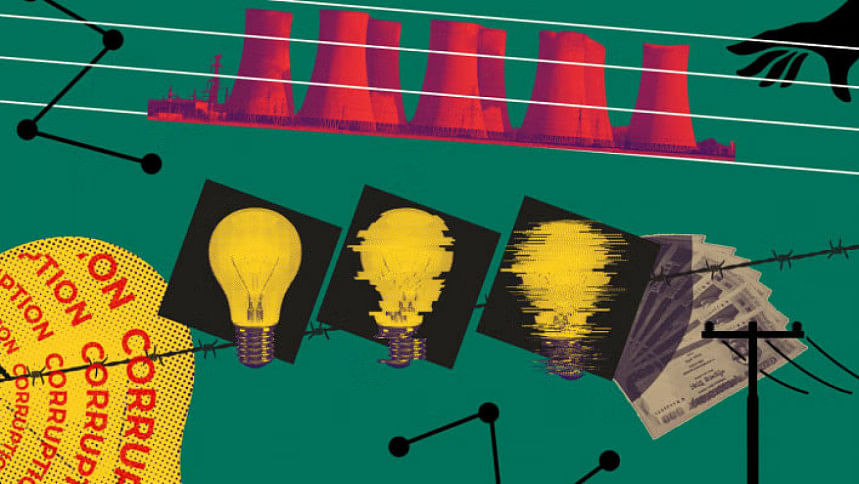Bangladesh’s energy policy raises more questions than answers

The government's approval of a new renewable energy policy, which sets higher targets of 20 percent and 30 percent electricity generation from renewables by 2030 and 2041 respectively, is a welcome step towards advancing the energy transition. However, despite these enhanced commitments, a lack of support mechanisms and persistent policy inconsistencies continue to hinder progress in the renewable energy sector.
While the national budget for fiscal year (FY) 2025–26, unveiled on June 2, articulates an ambitious vision of building a society based on "three zeroes"—zero poverty, zero unemployment, and zero net carbon emissions—it fails to offer incentives for the private sector to scale up renewable energy deployment.
In parallel, the government has made sweeping changes to the energy and power sectors. It repealed the Quick Enhancement of Electricity and Energy Supply Act (QEEESA) 2010, which previously allowed unsolicited project proposals without competitive bidding. It has also suspended renewable energy projects that had received Letters of Intent (LOIs) under QEEESA before August 2024. Additionally, the government floated four tender packages for renewable energy projects totalling over 5,000 megawatts (MW) in capacity but removed the payment guarantee clause. Such abrupt policy shifts raise serious concerns for investors.
The recent announcement to build a new coal-fired power plant to generate cheaper electricity than oil-fired peaking plants further highlights the lack of policy coherence. A baseload coal plant is unlikely to reduce the share of oil-fired generation and may instead exacerbate the sector's overcapacity, especially amid sluggish power demand growth.
Proposed budget fails to incentivise renewable energy
While solar power can reduce reliance on expensive oil-based generation, the proposed FY2025–26 budget does not include any incentives to promote solar or other renewable technologies. It also excludes the Tk 100 crore ($8.2 million) in renewable energy funding that was allocated in the previous year's budget. This disconnect between the government's stated ambitions and actual fiscal measures undermines momentum in the renewable energy space.
Abrupt policy changes dent investor confidence
The sudden shift to competitive bidding and the suspension of more than 30 renewable energy projects have cost developers dearly, as many had already invested substantial time and resources in land acquisition.
Furthermore, the exclusion of an "implementation agreement clause"—a provision akin to a payment guarantee—from the tender documents has negatively affected project bankability. Developers may now struggle to secure debt financing. The issue is already visible: Bangladesh failed to attract bidders for the first tender package of 12 projects totalling 453 MW, leading the government to extend the submission deadline six times.
Although 20 local companies ultimately submitted proposals, no foreign firms participated. This lack of foreign interest signals serious challenges for Bangladesh in achieving its 6,145 MW renewable energy target by 2030. Reaching this goal would require annual capacity additions of around 750 MW between July 2025 and December 2030. With the country's current renewable energy capacity at 1,562 MW—and only 400 MW of utility-scale projects under construction—domestic capital alone will not suffice. Foreign investment, along with support from multilateral and bilateral development partners, will be critical.
New coal plant will strain the power sector
In June 2021, Bangladesh scrapped 10 coal-fired power projects due to concerns over excess capacity and the growing difficulty of securing funding, especially from institutions focused on environmental, social, and governance (ESG) criteria. The move was also presented as part of the country's enhanced greenhouse gas (GHG) mitigation efforts, raising hopes for an accelerated renewable energy transition.
Fast forward to June 2025: the current government is now reconsidering one of the scrapped plants and plans to build a 1,200 MW coal-fired power plant in Matarbari, next to an existing plant. Although the rationale is to generate cheaper electricity compared to oil-based generation, this logic appears short-sighted.
Bangladesh's peak electricity demand declined by around 1.1 percent in 2025 compared to 2024—falling from 17,200 MW to 16,999 MW. With more than 7,000 MW of baseload capacity already under construction, adding another coal plant will only worsen the country's reserve margin, which currently stands at around 61 percent. This surplus will further strain the power sector's finances as capacity payment obligations rise in the absence of sufficient demand.
The decision also contradicts the GHG mitigation pledge made in 2021 and risks damaging Bangladesh's credibility in the eyes of investors and development partners.
As the government finalises the FY2025–26 budget, it should reconsider introducing a dedicated renewable energy fund and reinstating the Tk 100 crore allocation. It should also waive import duties on components used in rooftop solar systems.
Achieving Bangladesh's renewable energy targets will require not only sustained fiscal support but also a stable and predictable policy environment. Avoiding abrupt policy reversals is essential to attract long-term domestic and foreign investment.
Shafiqul Alam is lead energy analyst for Bangladesh at Institute for Energy Economics and Financial Analysis (IEEFA).
Views expressed in this article are the author's own.
Follow The Daily Star Opinion on Facebook for the latest opinions, commentaries, and analyses by experts and professionals. To contribute your article or letter to The Daily Star Opinion, see our submission guidelines.

 For all latest news, follow The Daily Star's Google News channel.
For all latest news, follow The Daily Star's Google News channel. 










Comments